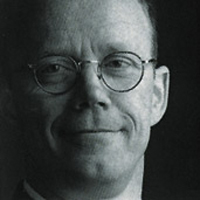
A group of designers, artists, researchers and inventors are working on a manifesto for creativity and innovation which will be published later this year. An early draft of the plan, which is part of the European Year of Creativity and Innovation (EYCI), could be ready by June, according to Ján Figel', the EU commissioner responsible for education, training, culture and youth.
The group of 27 ambassadors gathered in Brussels the day before yesterday (March 25) to begin thrashing out manifesto. Commissioner Figel' said the ambassadors were "autonomous and independent," and would set out concrete recommendations on how to make Europe more innovation and creativity-friendly.
"The manifesto will respect member states' competences, but can help define a common set of solutions to help Europe innovate its way out of the current crisis," Figel' said, adding that the group would meet again in June when the final communiqué should be taking shape. It is expected to take the form of a concise set of proposals which is likely to include recommendations on education, research spending, and innovation in the workplace.
"We want a generational shift and to raise young people's awareness of entrepreneurship," Figel' told reporters at a press briefing attended by a number of the ambassadors.
Positions
Erik Spiekermann, a professor and typography designer from Germany, said he was pleased to hear the term "manifesto" used as it implies the beginning of a movement.
When you hear that word you usually think of the Communist manifesto – even the Dadaists had a manifesto. Every movement in history has written a manifesto, which means what we're doing here is starting a movement. We don't want this to go away when the Year is finished. In fact, the first manifesto was the Ten Commandments. I envision seven or ten commandments that we want to live by, and hopefully other people will join the movement.
A Denmark-based innovation researcher, Professor Bengt-Åke Lundvall, said the manifesto should take account of the deep global financial crisis that has engulfed Europe.
The crisis creates a climate for policy and institutional change. If you go back to the 1930s, many of the fundamental institutional changes that shaped the post-war growth period were established in that period. So I think it creates potential for opening up discussions which have not been open for some time.
He said the ambassadors would have to come up with ideas which are coherent and constructive relating to knowledge creation, innovation and creativity in the context of the current economic situation.
I think there is a good chance that what we are doing could have practical consequences. We need to come with basic principles but also concrete ideas in order to have an impact.
Belgian molecular neuroscientist Christine van Broeckhoeven said for her the manifesto should be a strong statement, perhaps presented in bullet points.
It's important that we don't only make the statement but also have an implementation plan. At this time of financial crisis, the statement should provide some positive message for the future. It could also state that at this very difficult time it would be wrong to cutback on innovation and creativity. There are essential cutbacks but it would not be wise to cut research spending which is the basis for the future of innovation. The manifesto might also be a warning about what could happen to the values of innovation and creativity at this difficult time.
Portuguese conceptual artist Leonel Moura said manifestos are usually connected with something new.
I see this manifesto as a chance to bring something new. I don't know if we can do it because it's not easy. It should consider all aspects of what creativity and innovation means in society. I think we really need a new culture; a new concept of culture, because the one we are using today dates from the last century.
Damini Kumar, a designer and inventor based in Ireland, said the manifesto should be meaningful for the wider community.
For me, this manifesto has to answer their questions about why we're doing this and how the public will benefit from it. It will be most powerful if people can read it, understand it, and then learn from it and apply it.
Text:© euractiv.com

European Year of Creativity and Innovation
The European Year of Creativity and Innovation 2009 promotes the objectives defined in the Recommendation of the European Parliament and of the Council on key competences for lifelong learning. Key competences are a combination of knowledge, skills and attitudes appropriate to the context. They are particularly necessary for personal fulfilment and development, social inclusion, active citizenship and employment. According to the recommendation, key competences should be acquired by young people before the end of their compulsory education and training, equipping them for adult life, particularly for working life, whilst forming a basis for further learning; and by adults throughout their lives through a process of developing and updating skills.
Furthermore the Year also supports the broad-based innovation strategy for the EU which states that Europe must become an innovation-based society. Its main objective is to lay down a framework for promoting all types of innovation and encouraging the development of innovation-friendly lead markets. The broad-based innovation strategy is built on the belief that the EU has an exceptional but under-exploited innovation potential.
Accordingly the European Year 2009 follows the Council Resolution on new skills for new jobs. This resolution underlines the need for added-value advisory mechanisms to strengthen the identification of new types of jobs and skill needs at the European level, making use of existing sectoral skills activities and projects under lifelong learning, entreprise and social dialogue policies.
In terms of education policy, the European Year 2009 has also been designed to push forward the European policy cooperation in Education and Training,
confronting the challenges of how to integrate the different elements and policy challenges across and between different dimensions and levels of education and training; and of how to integrate education and training issues with the broader socio-economic debate under Lisbon.
Finally the European Year 2009 is also in line with the European agenda for culture in a globalising world.
This agenda furthers a more structured system of cooperation and concrete priorities aiming at the promotion of cultural diversity and inter-cultural dialogue; promoting culture as a catalyst for creativity in the framework of the Lisbon Strategy for growth and jobs; and promoting culture as a vital element in the European Union's international relations.
Header Image:Erik Spiekermann at TypeCon2005 NYC by Danny Dawson








